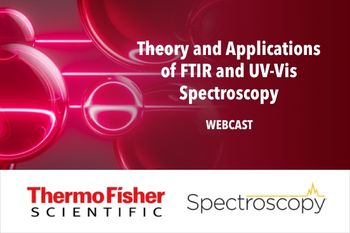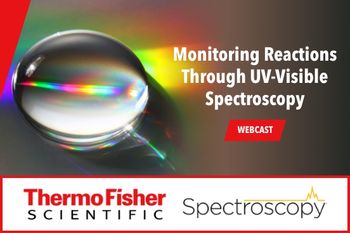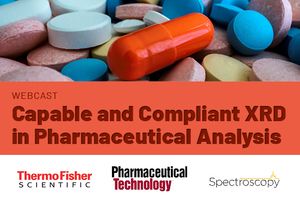
Webinar Date/Time: Tue, Dec 9, 2025 10:00 AM EST

Webinar Date/Time: Tue, Dec 9, 2025 10:00 AM EST

All food products should be of trustworthy quality and purity, not just for consumer safety but also to ensure product authenticity and the accuracy of product labels. This is especially important for olive oils, of which there are many different types based on quality (e.g. refined, extra virgin, etc.). In some circumstances, high quality oils can be adulterated with other lower quality olive oils or oils from a different source, like canola or soybean.

Thermochromic materials are substances which reversibly change color with temperature and are commonly used in a variety of products like textiles and smart windows, among other materials.

Pt-Co, Hazen, and APHA color are three different terms referring to the same color analysis procedure often used to assess the yellowness of water samples. In this analysis a mixture of cobalt chloride and potassium hexachloroplatinate(IV) is prepared and subsequently diluted by varying amounts to form an array of yellow to almost colorless standards, as described in ASTM D1209 and ISO 6271:2015.

The human eye is able to collect the light reflected off a surface, leading to the perception of color. Since the color range we can see covers the aptly named visible range of the electromagnetic spectrum (400 – 700 nm), UV-Visible spectrophotometers are often used for color analysis.

Elemental analysis is crucial in a wide variety of applications from detecting toxic elements within the environment, to ensuring drinking water is safe for human consumption, to food product safety. ICP-MS—able to measure an atom’s mass—offers low detection limits in the range of parts per trillion (ppt), making it a widely used method that can detect toxic elements well below regulatory limits. This paper expands upon how new ICP-MS technology can meet the challenges associated with heightened demands for element analysis and the hurdles laboratories face when analyzing high-matrix samples.

In this exclusive Spectroscopy interview, John Richmond and Tom Dearing of Thermo Fisher Scientific discuss the company’s Raman technology and the latest trends for process monitoring across various applications.

Analysis of drinking water in compliance with the U.S. EPA Method 200.8, Revision 5.4 using the Thermo Scientific iCAP MSX ICP-MS

Comprehensive analysis of water samples in alignment with EN ISO Method 17294 using ICP-MS

Robust analysis of a variety of water, wastewater, and soil samples according to the requirements of U.S. EPA Method 6020B.

This application note demonstrates robust and reliable analysis of soil samples using single quadrupole ICP-MS

Multi-element analysis of drinking water samples as per regulations from the Bureau of Indian Standards using ICP-MS

Light is utilized in a wide range of spectroscopic techniques and practices to gain a variety of information about materials and chemicals. These analyses can include material/chemical identification, quantitative analysis, quality control/quality assurance testing, and biological studies, among other applications. Applications, along with sample handling for both FTIR and UV-Vis spectroscopy, will be outlined in this paper.

Webinar Date/Time: Thursday, September 26, 2024 Morning Session: 10:00 AM EDT | 7:00 AM PDT | 3:00 PM BST | 4:00 PM CEST Afternoon Sesson: 12:30 PM EDT | 9:30 AM PDT | 5:30 PM BST | 6:30 PM CEST

Webinar Date/Time: Tue, Sep 17, 2024 10:00 AM ED

Often used to analyze solution-phase samples, UV-Visible absorption methods are remarkably effective for measuring solid-state samples too. UV-Visible analysis of solid samples can provide valuable information about the quality and effectiveness of manufactured materials and also reveal important characteristics during early stages of materials‘ development.

This application note discusses how the adverse effects of sample matrix can be circumvented with an analytical workflow that includes robust ICP-MS instrumentation offering comprehensive yet simplified analysis of samples containing high dissolved solids such as soil digests, wastewater and solid wastes. The data presented in this application note was generated over 12 hours with over 160 samples covering soil extracts and a variety of water samples.

Comprehensive guide containing best practices, proven strategies, and solutions for the entire trace elemental analysis workflow, starting with an introduction to environmental analysis, getting started with ICP-MS, and then workflow topics: sample and standard preparations, instrument calibration strategies, pre-analysis inspections, instrument optimization, data analysis and troubleshooting, and general maintenance. The guide emphasizes the importance of streamlining workflow to obtain accurate, reliable results. It’s an all-encompassing practical resource guide that also include links to pages online for the recommended laboratory apparatus, reagents, and standard solutions for convenience of the reader. The eBook has a related resource section with a curated list of relevant education resources such as app notes, technical notes, product brochures, and links to our environmental learning center pages.

This application note describes the analytical workflow developed for the analysis of water samples over an extended period using the latest innovations in ICP-MS instrumentation. The innovations specifically highlighted in this app note are the next generation Argon Gas Dilution accessory, which simplifies the analysis of high matrix samples allowing direct analysis without prior manual diution; the HAWK consumables and maintenance assistant within the Qtegra ISDS software; the new Easy-click compact (ECC) peristaltic pump; and the new Thermo Scientific autosampler, the iSC-65 autosampler.

This application note details the analysis of various brine solutions, containing up to 25% w/w dissolved salt, using robust ICP-MS instrumentation operated with the next generation Argon Gas Dilution (AGD) accessory. These high matrix samples were analyzed directly, without manual dilution, eliminating error prone and time- consuming preparation and handling steps. The developed method was rigorously tested for performance and reliability demonstrated through excellent quality control, matrix spike and internal standard recoveries for an analysis of 120 samples of 2.5% w/w brine solution.

This application note discusses a total workflow for the analysis of water and wastewater samples using the latest innovations in ICP-MS instrumentation which offers a comprehensive solution for effective and trouble-free analysis of samples containing high dissolved solids. The complete method quality control protocol was included in this study to ensure accuracy, precision, and reproducibility of an extended analysis consisting of 600 samples.


Learn how this efficient and effective analytical technique aids in monitoring chemical reactions and maintaining optimal conditions throughout bioprocessing and chemical manufacturing.

Webinar Date/Time: Tue, Sep 19, 2023 10:00 AM EDT

Webinar Date/Time: Thu, Aug 31, 2023 11:00 AM EDT




This note demonstrates how ICP-MS can be used to assess trace elements in individual yeast cells and display the mass distribution across several hundred cells.

This note demonstrates that nitrogen can be used as a purge gas for ICP-OES without compromising analytical performance and is comparable to using argon as a purge gas.

Published: November 18th 2021 | Updated:

Published: February 6th 2024 | Updated:

Published: August 12th 2020 | Updated:

Published: October 1st 2020 | Updated:

Published: October 30th 2025 | Updated:

Published: March 14th 2024 | Updated: